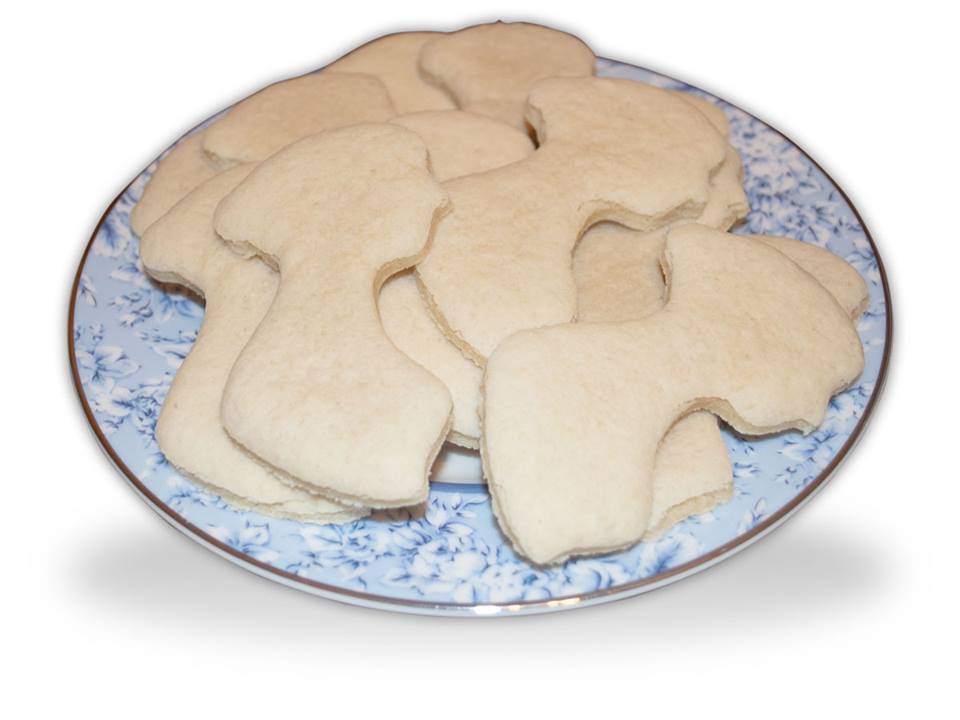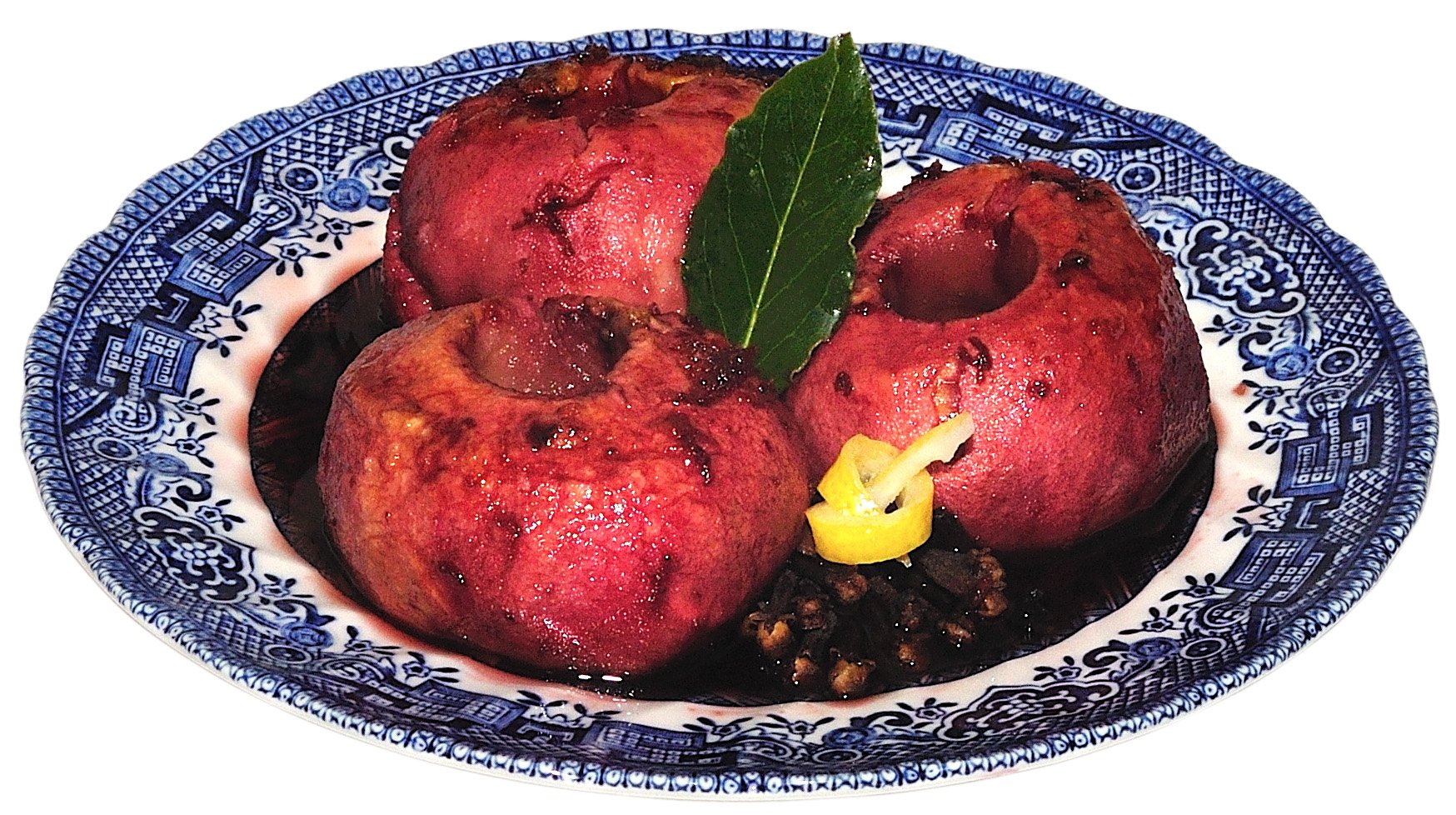Rendering Lard, the Regency Crisco
While researching Cooking with Jane Austen and Friends, I found many recipes that called for lard or suet (the beef alternative). It was often not immediately clear whether or not the authors were talking about straight, diced lard (like the kind used for adding fat and flavor to drier cuts of meat, as in "larding your roast") or rendered lard, however a trip the local living history museum helped put my questions to rest. A basic rule of thumb when looking at period recipes, if it goes into the food (larding your meat, dicing it for mincemeat, etc.) you are talking about lard straight off the meat, often with tiny bits of meat still attached. If you are using it for frying or in pie crust, basically anywhere you might substitute modern Crisco or solid shortening, use rendered lard.
 The Tamworth Pig was developed by Sir Robert Peel Rendered lard or tallow was also, and still is, used to make soap. The rendering process, when carried out over an open fire or pot on the stove can be time consuming and even smelly. A friend of mine recently gave me an excellent alternative, however, when she suggested using a crockpot. Read below for her instructions. Purchase your lard from your local meat market (grocery store or specialty store) or save the (uncooked) fat from your own pork dinners, in the freezer, until you are ready to render. And just in case you are unsure how to use your newly acquired, rendered lard, here is a recipe from Hannah Glasse's Art of Cookery Made Plain and Easy:
The Tamworth Pig was developed by Sir Robert Peel Rendered lard or tallow was also, and still is, used to make soap. The rendering process, when carried out over an open fire or pot on the stove can be time consuming and even smelly. A friend of mine recently gave me an excellent alternative, however, when she suggested using a crockpot. Read below for her instructions. Purchase your lard from your local meat market (grocery store or specialty store) or save the (uncooked) fat from your own pork dinners, in the freezer, until you are ready to render. And just in case you are unsure how to use your newly acquired, rendered lard, here is a recipe from Hannah Glasse's Art of Cookery Made Plain and Easy:
 According to Wikipedia, "Lard is pig fat in both its rendered and unrendered forms. Lard was commonly used in many cuisines as a cooking fat or shortening, or as a spread similar to butter. Its use in contemporary cuisine has diminished; however, many contemporary cooks and bakers favor it over other fats for select uses. The culinary qualities of lard vary somewhat depending on the part of the pig from which the fat was taken and how the lard was processed.
According to Wikipedia, "Lard is pig fat in both its rendered and unrendered forms. Lard was commonly used in many cuisines as a cooking fat or shortening, or as a spread similar to butter. Its use in contemporary cuisine has diminished; however, many contemporary cooks and bakers favor it over other fats for select uses. The culinary qualities of lard vary somewhat depending on the part of the pig from which the fat was taken and how the lard was processed.
 The Tamworth Pig was developed by Sir Robert Peel Rendered lard or tallow was also, and still is, used to make soap. The rendering process, when carried out over an open fire or pot on the stove can be time consuming and even smelly. A friend of mine recently gave me an excellent alternative, however, when she suggested using a crockpot. Read below for her instructions. Purchase your lard from your local meat market (grocery store or specialty store) or save the (uncooked) fat from your own pork dinners, in the freezer, until you are ready to render. And just in case you are unsure how to use your newly acquired, rendered lard, here is a recipe from Hannah Glasse's Art of Cookery Made Plain and Easy:
The Tamworth Pig was developed by Sir Robert Peel Rendered lard or tallow was also, and still is, used to make soap. The rendering process, when carried out over an open fire or pot on the stove can be time consuming and even smelly. A friend of mine recently gave me an excellent alternative, however, when she suggested using a crockpot. Read below for her instructions. Purchase your lard from your local meat market (grocery store or specialty store) or save the (uncooked) fat from your own pork dinners, in the freezer, until you are ready to render. And just in case you are unsure how to use your newly acquired, rendered lard, here is a recipe from Hannah Glasse's Art of Cookery Made Plain and Easy:
To make little Pasties. TAKE the kidney of a loin of veal cut very fine, with as much of the fat, the yolks of two hard eggs, seasoned with a little salt, and half a small nutmeg. Mix them well together, then roll it well in a puff paste crust; make three of it, and fry them nicely in hog's-lard or butter. They make a pretty little dish for change. You may put in some carrots, and a little sugar and spice, with the juice of an orange, and sometimes apples, first boiled and sweetened, with a little juice of lemon, or any fruit you please. Hannah Glasse, The Art of Cookery Made Plain and Easy, 1784To Render Lard in your Crockpot:
- Thaw frozen pork fat.
- Grind or chop into smaller pieces if necessary.
- Place in crock pot on low until partly melted and watery; there's no need to add extra water. This will take a couple of hours.
- Turn crock pot to high.
- As fat melts, with a ladle dip clear melted fat out of crock pot and strain into jars. I usually put a canning funnel over the jar then a double layer of cheesecloth over the funnel to strain the fat. Return uncooked pieces of fat to pot. Break up remaining lumps of fat in the pot periodically. Do this procedure every couple of hours throughout the day.
- As chunks in fat begin to brown, lift them out with a slotted spoon. Salt and enjoy; these are your cracklins. Think: “bowlful of bacon…mmmmm.”
- When jars are full, cover, no need for sealing lids, although they may create a vacuum on their own.
- Store jars of lard in the freezer for long term storage, up to a year; or refrigerator for more immediate use. Lard is countertop stable for a limited time, like butter, no need to toss if you forget and leave it out overnight or even for a couple of days.
- Lard tends to be softer than butter, so use a little less in recipes than butter, Crisco, or even coconut oil. Loaded in vitamins A and D (but only IF the lard comes from pastured pigs...If pigs are barn raised, they don't get the high levels of D from the sun, just like humans.)
Laura Boyle is fascinated by all aspects of Jane Austen’s life. She is the proprietor of Austenation: Regency Accessories, creating custom hats, bonnets, reticules and more for customers around the globe. Cooking with Jane Austen and Friends is her first book. Her greatest joy is the time she is able to spend in her home with her family.
If you don't want to miss a beat when it comes to Jane Austen, make sure you are signed up to the Jane Austen newsletter for exclusive updates and discounts from our Online Gift Shop.



Leave a comment
This site is protected by hCaptcha and the hCaptcha Privacy Policy and Terms of Service apply.